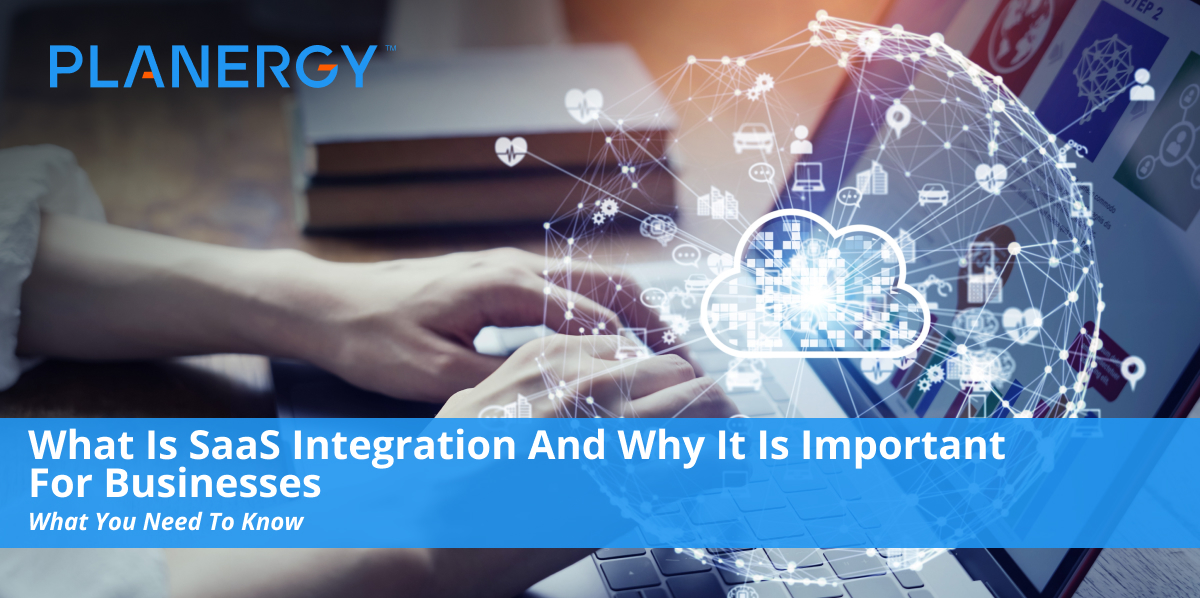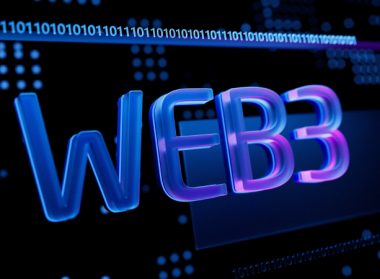What Is SaaS Integration And Why It Is Important For Businesses
Software-as-a-service (SaaS) is a software distribution model where a cloud provider hosts the software online, and the customers pay a subscription fee to access the software from any internet-enabled device.
SaaS companies use a cloud service like Amazon Web Services (AWS) to host their Saas product, and allow users to access it from the internet with their login credentials.
This model has been around since the early 2000s, but has become so popular that nearly every business operating today uses at least one SaaS application. It replaces the need to download software that’s specific to the machine it’s installed on.
Because of the flexibility and affordability of these applications, many organizations rely on them for day-to-day operations. If you work in sales, you more than likely use a customer relationship management (CRM) platform. If you work in human resources, you’re more than likely leveraging a type of human resources information system HRIS. Because there are so many SaaS applications available, the average enterprise organization uses nearly three hundred of them over the course of their day-to-day operations, in conjunction with on-premise systems.
With so many to keep up with, that’s where SaaS integration comes in. By integrating the applications with the other technology in your business ecosystem like your enterprise resource planning (ERP) system, you can ensure smooth operations and processes in everything your employees do.
SaaS integration or SaaS application integration is the process of connecting your saas applications with other cloud-based apps or any on-premise applications you may use with application programming interfaces or APIs. Once they are connected, the apps can request and share data freely with one another.
Google workspace Suites is a prime example of simple saas integration. Google owns multiple applications:
- Gmail
- Google Drive
- Google Docs
- Google Sheets
Google has integrated them to make it easy to move data between the applications while working. Since Google owns all of the apps, they built the platform with this ease of data transfer in mind. SaaS integration makes it so that applications from multiple SaaS vendors can talk to each other.
How is SaaS Integration Different from App Integration and API Integration
You may hear the terms SaaS integration, app integration, and API integration and think they are different things. The truth is, all the terms refer to the same thing and therefore, can be used interchangeably.
API refers to a method used to connect apps. It’s a set of code-based instructions used to send and receive information between apps. In the past, API integration has required a developer. With the rise of Integration Platform as a Service (iPaaS), however, you do not need to hire a developer or have the technical knowledge. iPaaS steps in to take care of the integration for you.
What is the Difference Between SaaS API and SOAP API?
Most SaaS API is built with the REST (Representational State Transfer) architecture platform, though some are also built with SOAP (Simple Object Access Protocol).
REST and SOAP are protocols for ensuring that programs built with different platforms could easily exchange data. SOAP is the older protocol, and REST was designed specifically for working with media components and files on a particular hardware device.
Both are used in web services, though REST requires less bandwidth. A qualified developer can determine the best way to approach integration.
What’s the Difference Between a SaaS Integration a Custom Integration?
A SaaS integration allows two or more cloud-based programs to talk with one another, sharing data back and forth, with little to no programming required.
A custom integration, on the other hand, relies on a developer to build the code that facilitates data sharing. It is much more costly and time-consuming and may require updates as programs change.
SaaS integration comes with benefits and challenges, but is worth it for the vast majority of businesses, regardless of size.
Benefits of SaaS Integration
SaaS integration offers businesses many benefits, including:
Saves Time
Perhaps the most obvious of all benefits, many organizations turn to SaaS integration to save time. Your business can automatically transfer information between apps as needed. All it takes is a bit of time to set up the initial integration, and it’s good to go. There’s no need to worry about manually entering data.
For instance, if you use a ticketing system for customer service with a CRM, your customer support agents won’t have to update the customer information across both systems. When an agent marks a case closed in the ticketing system, it will automatically update your CRM. The time the agents save here can be invested in more value-added activities
Reduces Human Error
With manual data entry comes the potential for costly mistakes. Even a small typo can cost hundreds, if not thousands of dollars. You use resources to locate and correct the error, not to mention the havoc the error itself may have wreaked on your customer satisfaction or vendor relationships.
When you automatically send the correct information between applications, you no longer have to rely on a middle person to correctly enter the information. Automation greatly reduces, and may even eliminate human error.
Improves Transparency
With so many SaaS apps, integration solutions keep the right information in the right place at the right time. You can use your choice of tool to keep it up to date so that your team always has the right information to make informed decisions in real-time.
Improves Customer Service
Today’s customers are more demanding than ever. They want things done quickly, and correctly. If someone makes an ecommerce purchase, they expect an order confirmation immediately. And when the order ships, they want to know when it shipped, along with a tracking number so it can be tracked until it makes it to their front door. If they decide to request a refund, they want the money transferred to them immediately, along with another confirmation email.
When your business applications are connected, these processes are automated to keep things running smoothly and keep customers happy.
Easy to Scale
When a company grows, it’s easy for some of your functions to get out of hand. But when your apps are integrated, they automatically send information back and forth and without the risk of potential. It makes it easy to scale all business processes across your organization. If your company is trying to scale, integration is a key part of your strategy. For Enterprise companies, it is an absolute must, because it is common for businesses to use more than 100 apps across all of their departments.
Disadvantages of SaaS Integration
While integrating your SaaS apps can improve your workflows, that’s not to say you won’t run into some integration challenges.
Requires Technical Expertise
Saas integration requires technical expertise that may prohibit your employees from building the Integrations themselves. This can result in a backlog of Integrations that frustrate your teams and leaves the potential for data silos to exist. Because your employees at large cannot be directly involved in the process, many Integrations may fall through the cracks.
Can Be Time Consuming to Implement
Because of the amount of technical work involved in connecting all of your apps, the time frame for building integrations can easily be stretched out. The longer an integration takes, the greater the potential for a gap of information across apps. This forces employees to hop back and forth between them to get the information they need and re-enter data. Any time an employee must re-enter data there is the potential for mistakes.
Multiple Platforms May Be Difficult
The more cloud applications you use, the more difficult it can be to manage everything. If you truly want to change the way your organization operates with a digital transformation, you must go beyond connecting your SaaS apps to connect cloud data and workflows across all your applications, teams, and data.
Making Data Integration Easy
If you work with multiple saas apps that don’t have native integrations built-in, you have the option to build a custom integration with the API. But for this to work, the software provider must make their API available to you. That’s why when you choose applications to build your company’s ecosystem, you must be sure they either automatically integrates with your other tools via a simple connector, or have an open API for developers. Planergy has a strong API to ensure that multiple software can be integrated with ease.




